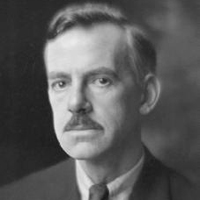O'Neill's Style in Desire Under the Elms
Eugene O'Neill's style is sharply different from the style of most of his contemporary playwrights. He is the leading modernist playwright who wrote naturalistic, realistic, and symbolic and expressionistic plays. O'Neill's stylistic breakthrough has given a unique twist to his play.

Eugene O'Neill (1888- 1953)
One of the most surprising features of his style in Desire Under the Elms is the use of common speech. Unlike, the characters in classical tragedies, O'Neill's characters speak in the common language. In Desire Under the Elms the characters speak in peasant dialogue. Readers have to exert a lot to understand the conversation between characters. Even the major protagonist in O'Neill's Desire Under the Elms is brought from the common walk of like. Unlike the protagonist in classical tragedy, O'Neill's protagonist in Desire Under the Elms speaks in peasant dialect. In Desire Under the Elms Eben, Abbie and Ephraim Cabot Speak in their dialect.
Simeon: Dunno. He druf off in the buggy, all spick an" span, with the mare all breshed (Part I. Scene II).
This use of common-speech pattern adds a realistic dimension to the play. Furthermore the very introduction of the peasant dialect into the texture of the play makes the tragic magnificence oriented towards lifelike situation. O'Neill's entire struggle intends to move towards expressionism. We can clearly notice the presence of expressionistic elements in Desire Under the Elms. The main conviction of expressionism is that the character does not follow the idea, but is interested in himself and what he does. This expressionistic conviction has perfectly found its manifestation in Desire Under the Elms. At the end of the play Abbie and Eben do not follow the idea of repentance; rather they continue to affirm the gravity of their love. They were interested in themselves, and not in the idea. The readers are amazed to see the absence of repentant conscience in Abbie and Eben. Even after committing such a heinous crime, they reacted as though there is no atom of conscience in their mind, as though their conscience is completely deadened.
The third admirable feature of O'Neill in Desire Under the Elms is the transcending from the theatrical and the melodramatic convention to the invention of an innovative modern drama. Modern drama, according to O'Neill, portrays the man and his struggle with his own fate. In Desire under the Elms each characters struggle with his or her fate. Ephraim Cabot struggles with his fate of loneliness, Abbie struggles with her overweening passion and lust, Eben struggles with his strong lust for the land. In their struggle they are defeated, but they, nonetheless, reveal an éclat of nobility.
Many of O'Neill's characters were intended as a symbol rather than individuals. But he always refused to use the obvious abstractions, such as "Man", "Woman", "Sailor". According to O'Neill, an abstract idea could only get across to an audience through an individual personality.
If we look at O'Neill's style of entitling his plays, we come to know about his affiliation with the theatrical ideology. The very title of the play Desire under the Elms reflects O'Neill's inclinations towards expression. The very word Desire is a kind of variations on it, reflecting different desires of the different characters. It refers to Abbie’s desire for lust, Eben's desire for land, Ephraim's desire for security, and Simeon and Peter's desire for - gold. Another word 'Elm' from the title denotes the roughness that beset the existence of Cabot family. If we, thus, observe deeply O'Neill's art of entitling his plays, we come to grasp facts regarding to his craftsmanship affected by his connection to the movement of expressionism in the 20th century history of modern drama.
O'Neill's style in Desire under the Elms is marked by his minute attention to the stage setting. In this play the setting provides a proper environment for the action. By the same token, it directs influences and enhances the dramatic action. O'Neill's details-ridden stage setting works in collusion with his expressionist intention in the play.
Despite the striking features of O'Neill's style in Desire under the Elms, there exists a set of loopholes and clumsy stylistic traits in it. The frequent repetition of dialect terms like "Purty" has confounded the coherent interest of readers. In the same vein, the inclusion of humble characters as the protagonists of the play has detracted from the universal appeal of the tragedy. If we keep at bay all these trivial stylistic flaws, Desire Under the Elms appear to be a matchless modern tragedy.
Desire Under the Elms Study Center
Introduction of Desire Under the Elms
Summary of Desire Under the Elms
Symbolism in Desire Under the Elms
Image of Women in Desire Under the Elms
The Themes in Desire Under the Elms
A Conflict of the Dionysian and Apollonian Forces
Dramatic Technique in Desire Under the Elms
 |
bachelorandmaster.com |